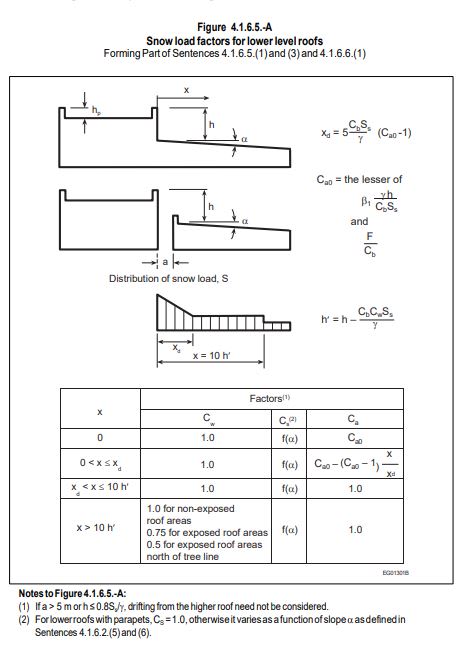diegotorres1
Structural
HI everyone, I was wondering if i could get a little guidance as I am looking at the designing a canopy structure next to an existing building that has a 7'-0" parapet, and the height difference between the top of parapet and roof of new canopy is about 10'-6". I'm particularly looking at the potential snow drift, but I wasn't able to see anything along those lines in the ASCE 7. I did however, come across a diagram from the NBCCa 2015, were it has an exact depiction of what i am looking at. Any advice and guidance is well appreciated. I have attached a screenshot of the diagram in the NBCC 2015.



